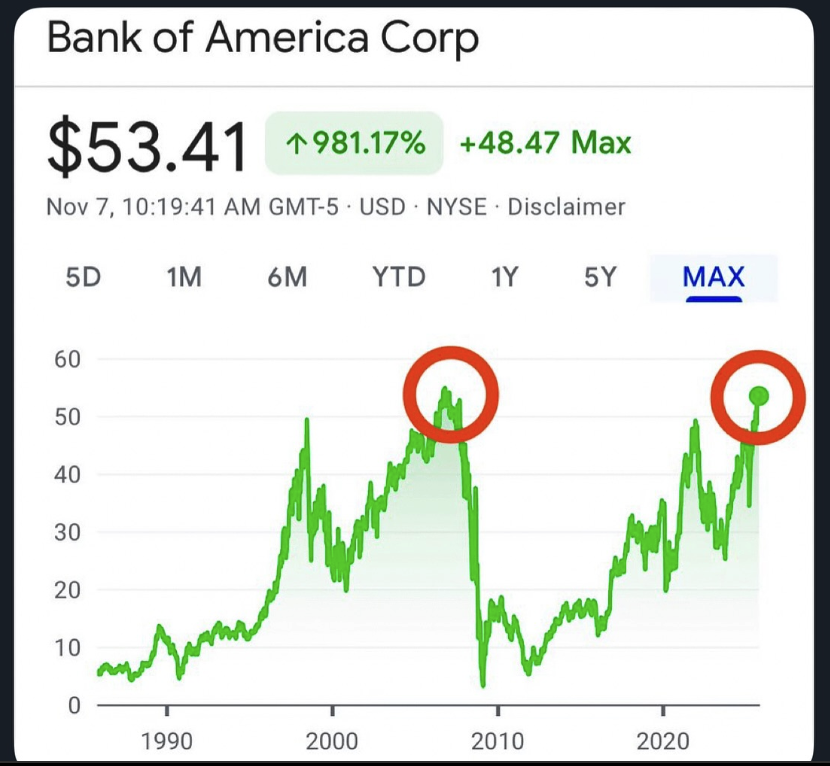Bank of America Stock Prices Fully Recovers from 2008: The Long Shadow of 2008
Seventeen years after the collapse that nearly took down the global financial system, Bank of America has finally declared itself fully recovered from the 2008 financial crisis.
On the surface, it’s a corporate success story, a bank that weathered historic turmoil, rebuilt its balance sheet, and reclaimed investor confidence. But beneath that headline lies a deeper, more revealing truth: the 2008 crisis never really ended. Its aftershocks have rippled through the economy, institutions, and human psychology for nearly two decades. Bank of America’s delayed recovery is a window into how modern capitalism processes trauma.
1. Systemic Crises Decay Slowly
When Lehman Brothers fell in September 2008, it was described as a “shock” to the global financial system. In reality, it was the start of a long decay cycle that would take over a decade to unwind. Bank of America’s journey from collapse to stability, spanning more than 15 years, shows that systemic crises are never singular events. They are slow-motion reorganizations of entire economic systems.
Financial markets “recovered” within a few years. But the institutions that nearly broke the system, from mortgage lenders to rating agencies, spent years trapped in legal purgatory, balance sheet triage, and reputation repair.
The crisis was over when the headlines stopped. But the real work, unlearning, restructuring, and regaining trust, was just beginning.
2. Survival Is the Ultimate Competitive Advantage
Bank of America survived because it was “too big to fail.”
That phrase, once used as an insult, has become a strategic moat. When governments backstop your existence, time becomes your ally.
While smaller banks were liquidated or merged, Bank of America endured, aided by the state, tolerated by regulators, and eventually rewarded by markets. Seventeen years later, it’s thriving.
The uncomfortable truth is that crises consolidate power. The weak die, the reckless get absorbed, and the survivors become larger and more entrenched. In a sense, the crisis reshuffled the hierarchy within it.
“Too big to fail” quietly evolved into “too important to leave broken.”
And in that evolution lies a lesson: in modern finance, the most valuable asset is systemic importance.
3. Time Is the Ultimate Privilege
Perhaps the most revealing lesson from Bank of America’s recovery is this: only the biggest institutions get the time to heal.
A small business that collapses in a recession doesn’t get 15 years of low-interest loans and legal settlements to recover. But Bank of America did. The system bent to accommodate its healing because its failure would have broken the system itself.
That asymmetry, the power to survive simply because you must, is the hidden engine of modern capitalism.
Time heals, but only for those who can afford to wait.
4. The Final Lesson: Crises End When We Outgrow Them
Bank of America’s recovery doesn’t mean the crisis is gone. It means the people and systems that carried its memory have evolved past it. The balance sheet is clean; the leadership is steady; the regulations have stabilized. The institution has become the product of its trauma — disciplined, risk-aware, and politically vital.
But the deeper meaning is htistorical:
Crises don’t truly end. hey fade into the architecture of the system.
The 2008 financial crisis is now part of the DNA of modern banking, encoded in every stress test, every capital buffer, every cautious CEO decision. Bank of America’s recovery is less a victory lap than a closing chapter in a 17-year social and financial healing process.
Conclusion: The Long Memory of a Broken System
The recovery of Bank of America is not just about one bank. It’s about how long systemic damage lasts and how societies metabolize failure.
It shows that capitalism doesn’t forget its wounds. It builds around them, layering new structures over old scars. The 2008 crisis reshaped not only banking but the way we define safety, trust, and success itself.
So yes, Bank of America has recovered. But in another sense, it hasn’t, because the world it recovered into is still defined by the crash that nearly ended it.
